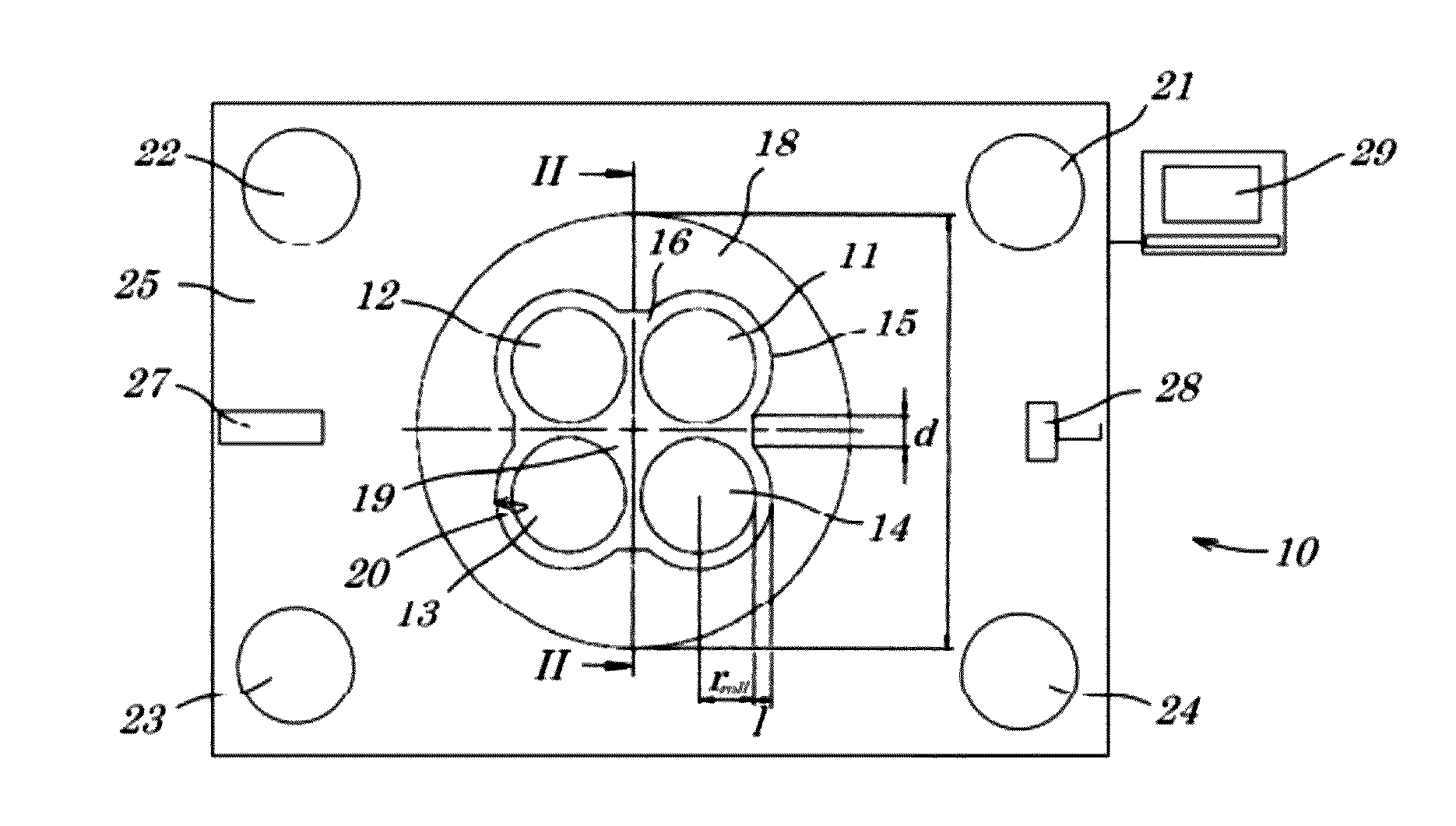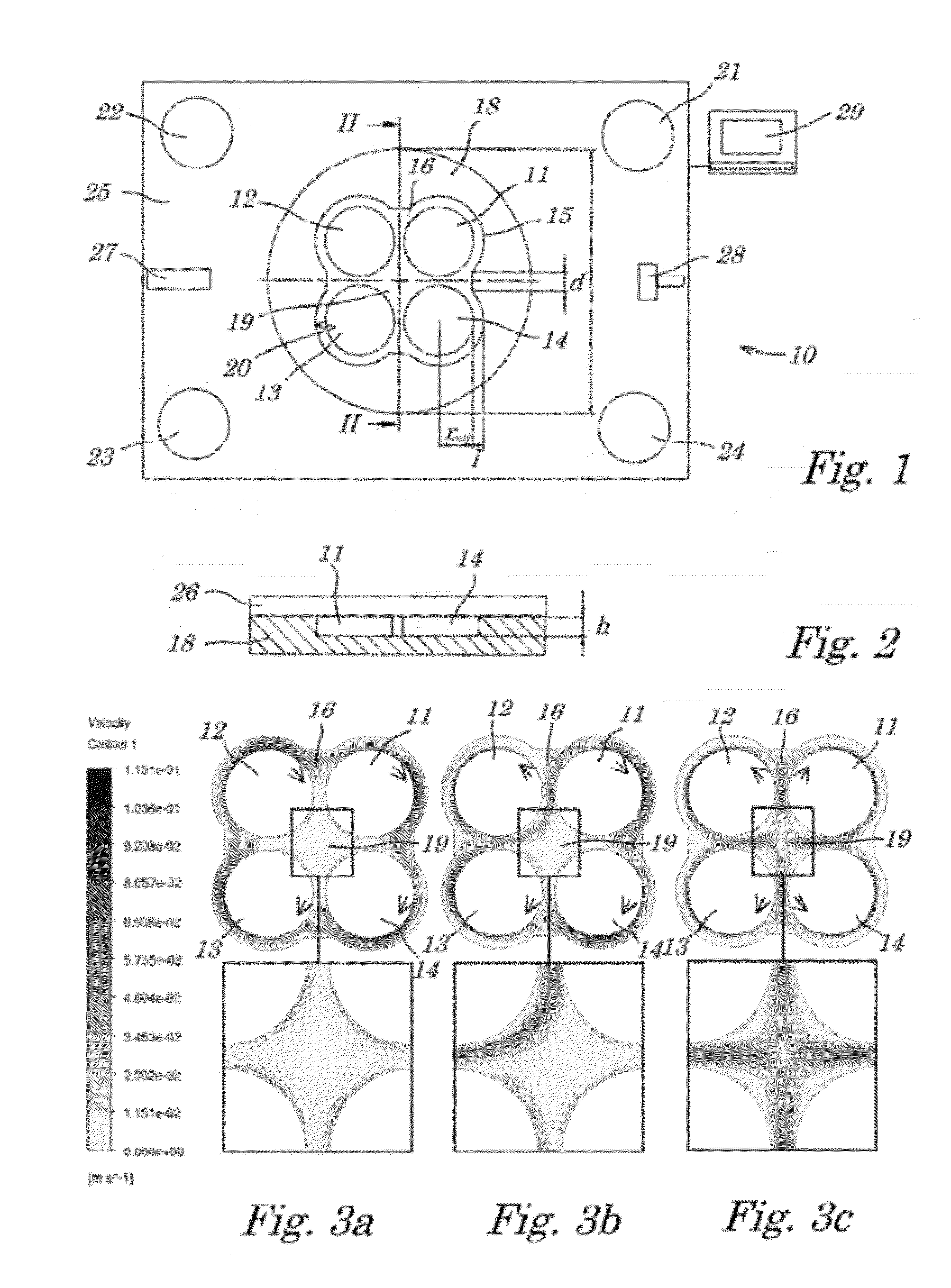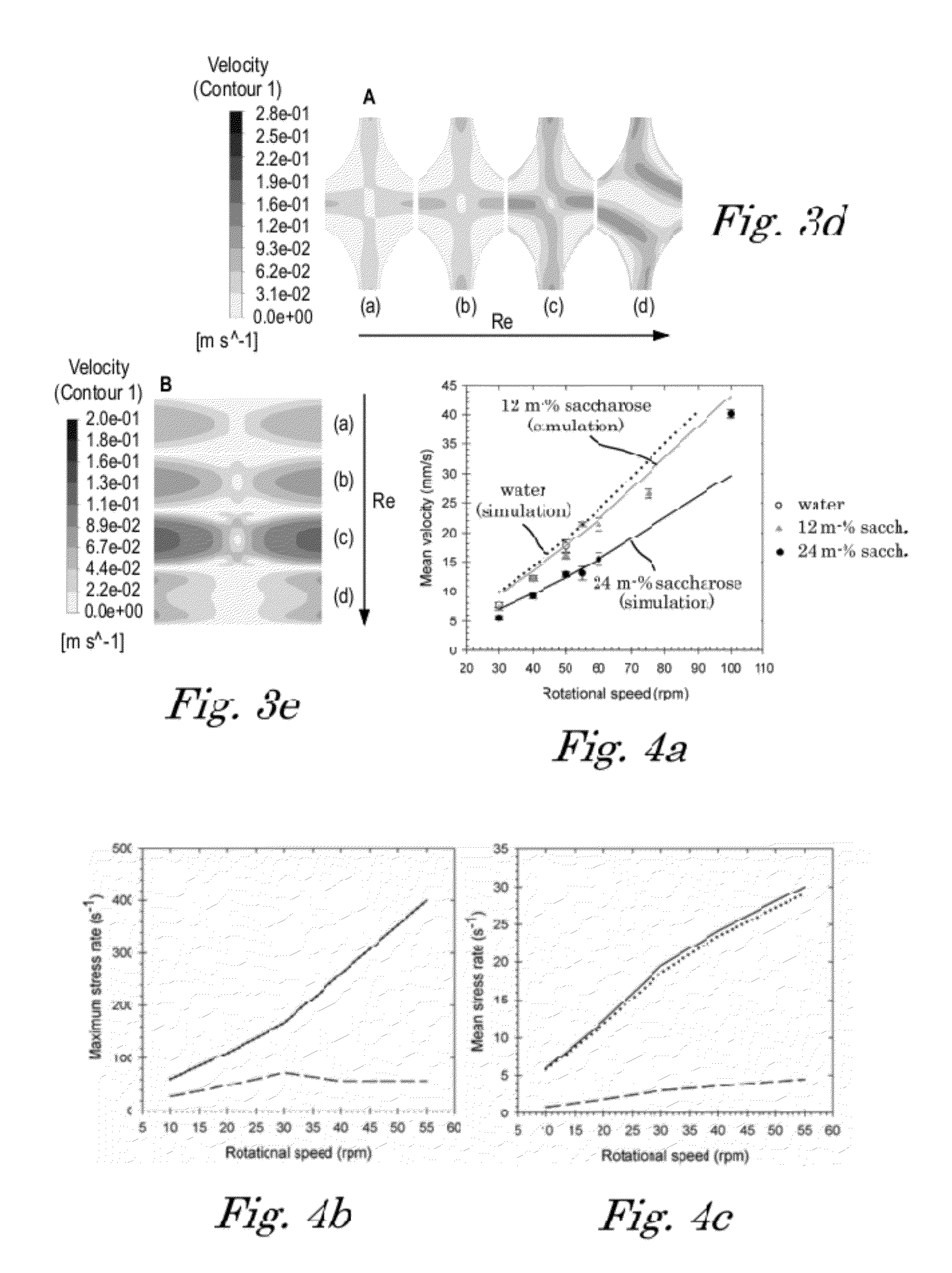Method and device for determining mechanical stress load and interface effects on particles dispersed in a fluid
a technology of interface effects and mechanical stress, which is applied in the direction of mechanical measurement arrangements, instruments, and mechanical means, etc., can solve the problems of inability to perform systematic analysis of the impact of various mechanical stress on the degradation of biomolecules, large sample volumes are required when using conventional industrial equipment, and inability to downscale. the effect of reducing the number of steps
- Summary
- Abstract
- Description
- Claims
- Application Information
AI Technical Summary
Benefits of technology
Problems solved by technology
Method used
Image
Examples
example 1
Characterization of Flow Patterns
[0082]In FIGS. 3a, 3b and 3b three distinct flow patterns obtained by operating the device of FIG. 1 in three selected modes are shown. These results were obtained with Computational Fluid Dynamics (CFD) methods using water (Re 155) as a sample liquid (see also Example 1 below). Arrows indicate the rotation direction of the rolls. The upper drawing in each figure shows the rotation of the roll and a visualization of the flow pattern in the sample chamber 16. The lower drawings show an enlarged view of the flow pattern in the sample space 19 in the center of the chamber 16. In the case of FIG. 3a, all four rolls 11, 12, 13, 14 are rotated in the same direction with essentially the same angular speed. Accordingly, rotational stress is predominately imparted on particles in the sample space 19. In the case of FIG. 3b, a hybrid mode in employed where shear stress but also extensional stress and rotational stress is imparted on the particles by rotating o...
example 2
Aggregation of a Monoclonal Antibody Fragment
[0093]One form of protein degradation that may be induced by mechanical stress is the formation of large aggregates. Different external effects such as high temperature, extreme pH values, high salt concentrations, adsorption phenomena and mechanical stress can lead to changes in structure and / or aggregation of proteins. In this example, the aggregation of a monoclonal antibody fragment has been investigated.
[0094]The formation of aggregates during the development and production of therapeutic proteins in biopharmaceutical industries is problematic as this can lead to an inactivation of the molecules and to immune response of the organism. Protein aggregates can be formed due to the above mentioned external effects or under physiological conditions (neutral pH, T=37° C.). They include mainly non-native intermolecular β-sheets, independent of the native structure or the aggregate morphology (amorphous or fibrous).
[0095]For many proteins it...
example 3
Deactivation of Lysozyme
[0107]Degradation of proteins due to mechanical stress may also result in a loss of activity of proteins. Activity loss may be induced by structural changes and / or aggregation. The measurement of the activity loss is therefore a helpful method to quantify the degradation.
[0108]In the present example the activity loss of lysozyme has been determined upon mechanical stress imparted on a lysozyme solution using the device of FIG. 1.
[0109]FIG. 12 shows in situ turbidity (absorbance) measurements at 350 nm during stressing of lysozyme at different rotational speeds in extensional flow mode with the device of FIG. 1 using PTFE rolls and PTFE lid. Rotational speeds are indicated by different bullets in FIG. 12, i.e. ∘ corresponds to 55 rpm, ▴ to 45 rpm, ▪ to 35 rpm and ▴ to 25 rpm. Generally, absorbance increase with both rotational speed and impact duration of the mechanical stress.
[0110]This is also verified by the measured particles size distribution after stress...
PUM
| Property | Measurement | Unit |
|---|---|---|
| volume | aaaaa | aaaaa |
| length | aaaaa | aaaaa |
| Reynolds numbers | aaaaa | aaaaa |
Abstract
Description
Claims
Application Information
 Login to View More
Login to View More - R&D
- Intellectual Property
- Life Sciences
- Materials
- Tech Scout
- Unparalleled Data Quality
- Higher Quality Content
- 60% Fewer Hallucinations
Browse by: Latest US Patents, China's latest patents, Technical Efficacy Thesaurus, Application Domain, Technology Topic, Popular Technical Reports.
© 2025 PatSnap. All rights reserved.Legal|Privacy policy|Modern Slavery Act Transparency Statement|Sitemap|About US| Contact US: help@patsnap.com



